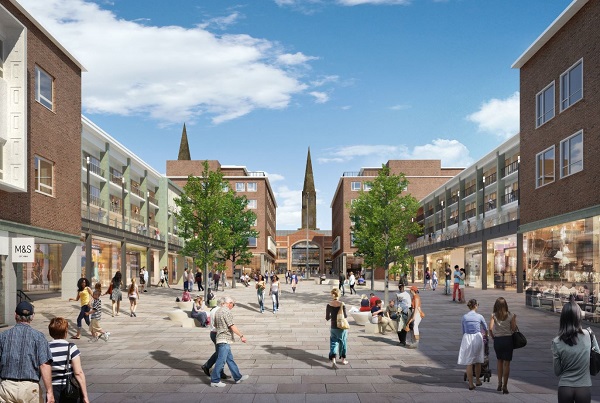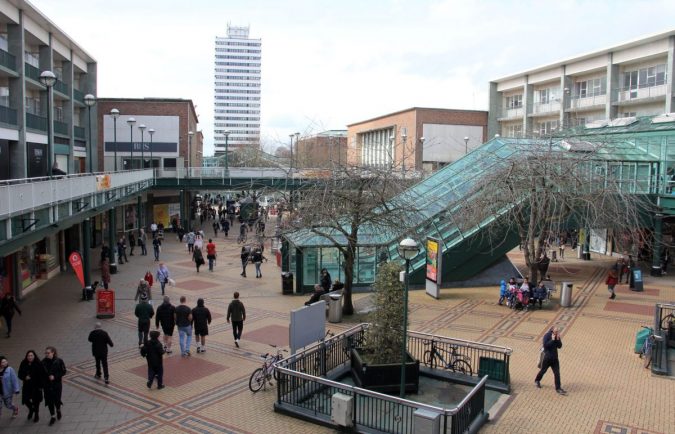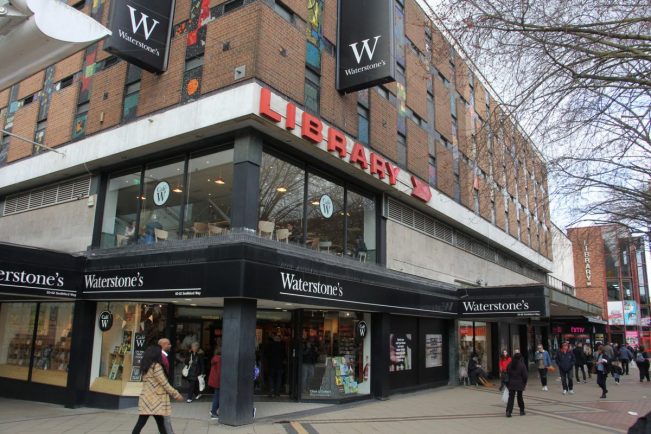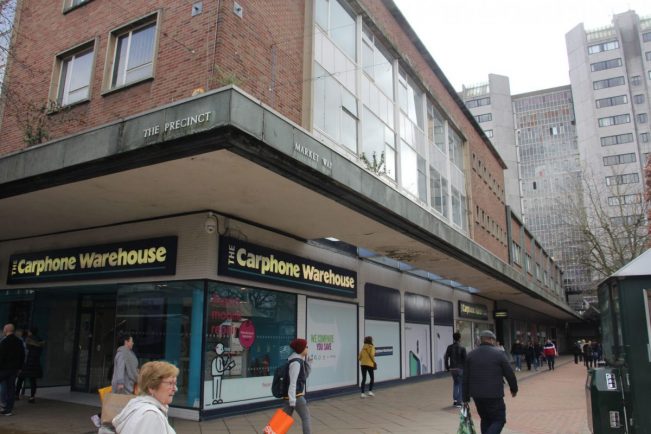A plaque explaining Coventry city centre’s pioneering, pedestrianised post-war redevelopment quotes its internationally celebrated architect Sir Donald Gibson.
That quote, on the plaque entitled ‘The Architect’s Vision’ at the top of the Upper Precinct ramp, reads: “If you cannot put up buildings of your own time, you might as well forget it. A town must live, you cannot wait until fashions change.”
It’s therefore ironic that the government has now listed more parts of the Upper Precinct upon national heritage adviser Historic England’s recommendation.
It has sparked sometimes heated but valuable public debate on our city centre’s past, present and future.
It is well documented that the city centre’s retail performance has barely registered in the top 50, despite Coventry being one of the UK’s biggest cities.
Councillor Jim O’Boyle, cabinet member for jobs and regeneration, has vented his frustration, labelling Historic England officers as Tarquins in tweed and Rupert The Bear trousers.
His view is that he and Coventry City Council leaders were, in any case, promoting a planned Upper Precinct redevelopment which strikes a balance between attracting developers/retailers’ investment and retaining the fundamentals of the unique Gibson design. The unpopular green escalator added later in the 1980s would be demolished.
‘Trust us as Coventry people,’ is the message from councillors. The listings were unnecessary, they say.
There is general agreement that what Coventry needs is the best of the old, and the best of the new. That is certainly my view as a journalist who has covered similarly heated debates – from the Lower Precinct “burger bar” row in the 1990s, to the fall-out over Coventry Market’s listing a decade ago, and the next-generation but over-ambitious (and ultimately recession-hit) vision for Coventry of Los Angeles modernist architects Jerde.
PROFIT MARGINS
But developers see listed buildings as onerous, and Coun O’Boyle has vociferously advanced that argument.
In the “real world”, as he puts it, developers won’t invest without the profit margins required to satisfy their own investors.
At the centre of the storm is the listing of the ex-British Home Stores (BHS), which, like much of the Precinct area, has a “canopy”. To you and me, that’s the first-floor overhang we walk under next to the shops to keep dry.
Coun O’Boyle claims that for the first time in years there has been market interest in occupying the empty BHS building, and that could well be lost if the canopy is retained.
Developer the Shearer Group wants to move the shop fronts forward, removing the canopies, to have double-fronted shop fronts which retailers, we are told, are more interested in. It means more square feet of retail space.
In the real world, it is said, profit margins are important and added costs are already incurred by demolishing the escalator.
So the developers are in discussions with Historic England and may seek the council’s Listed Building Consent to remove BHS’s canopy at the very least.
Councillors emphasise its shabbiness for good measure – although wouldn’t it hypothetically be the council’s responsibility to issue enforcements to property owners to clean up mess?
But for listings to be overturned, developers will have to prove an overwhelming “economic case” why it is necessary to do so. I’m not persuaded that will be easy.
FLAWS IN ARGUMENTS
Coun O’Boyle’s frustration is understandable. His task is to revive the city’s economy, and he is driven to achieve that.
Yet it seems to me that two fundamental arguments underpinning the public debate are flawed.
The first is the view that somehow Coventry’s “nationally important” listed post-War architecture is the reason for poor retail performance.
Take, for instance, the unpopular 1980s addition, Cathedral Lanes shopping centre – which blocked views to the cathedral, a central tenet of Gibson’s design. It has been largely empty for decades.
Neither is it an architectural gem. It’s more akin to the modern ubiquitous construction that can make it difficult to tell some towns’ shopping centres apart.
Many shops are boarded up elsewhere in Coventry city centre away from the listed areas, as with other towns and cities in the internet shopping era. Many are located in ‘city centre south’ which is prioritised for redevelopment to attract more much-needed desirable stores.
There are macro-economic and structural problems, of course. People in cities such as Coventry are feeling the real-world squeeze on living standards. And developers and retailers internationally know the towns and cities where people with more disposable income live and shop.
The second well-intentioned but skewed argument is the overemphasis on developers’ profit margins.
A city centre is ultimately a civic space for people.
The primary focus must surely be on the experience of shoppers, visitors and others who make or break the city centre’s daytime and nighttime economy.
Many have unsurprisingly expressed that they like the canopies. Not because of how they look but because they keep the young, elderly, disabled, all of us, dry in the rain. There’s a simple human desire for shelter.
Historic England has rightly emphasised how Gibson’s city centre was planned as an egalitarian civic space for people to share and enjoy amid post-war optimism and regeneration.
Perhaps BHS’s corner canopy could go, like Waterstone’s opposite already has. But should the rest? Really?
The Upper Precinct ramp, also earmarked for demolition, serves a purpose too. To help those including the disabled get to the now listed upper floor link walkways.
COMPROMISES
Compromise will be required, including from the developers.
Coventry city centre’s listing for its national importance is actually relatively uncontentious.
And it is nothing new.
Gibson’s Lower Precinct – a pioneering prototype for pedestrianised two-level shopping malls – saw redevelopment in the 1990s that was sympathetic to its listing.
Who could argue that its iconic “burglar bar” – a modernist meeting place of its time – is not an interesting and deserving piece of architecture.
Yet I recall outrage at its listing when it was earmarked for demolition. What appears ugly to one generation may be more appreciated just 20 years later.
It could be argued that elements of the listings are not merited. Not all of Coventry city centre should be preserved, clearly.
Everything must earn its place in the city centre of the future. But most of what emerged from Gibson’s imperfect masterpiece will be part of it.
Not even the pre-2010 Jerde masterplan – backed by the council’s then Conservative administration – with rooftop parklands and an egg-shaped structure at the now listed Central Library – proposed abandoning the Gibson Precinct ‘cross’.
The council’s own ‘conservation and heritage’ and ‘city centre action plan’ policies are designed to protect the city centre which arose from Gibson’s vision, and which is now in Coventry’s ‘heritage action zone’.
A council taxpayer-funded campaign in recent years championed the ugly and less-than-loved post-war ring road.
So why not similarly promote, champion and sell the unique post-war centre? And find innovative ways of attracting more people to live, work, shop and play in it, in the run-up to hosting UK City of Culture in 2021.























